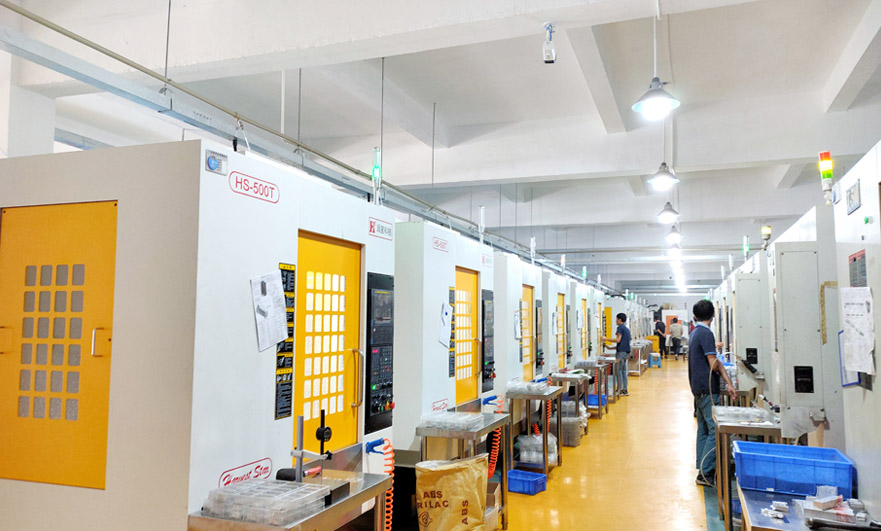15 years one-stop China custom CNC machining parts factory

Hey there I’m VMT Sam!
With 25 years of CNC machining experience we are committed to helping clients overcome 10000 complex part-processing challenges all to contribute to a better life through intelligent manufacturing. Contact us now
 142 |
Published by VMT at Oct 25 2022
142 |
Published by VMT at Oct 25 2022
What is Prototype machining?
Industrial product prototypes often need to be prototyped machining. Prototype is the first step to verify the feasibility of a product. It is the most direct and effective way to find out the defects, deficiencies and drawbacks of the designed product, so as to make targeted improvements to the defects and avoid expensive Open mold costs, reduce R&D risks, and speed up R&D efficiency. So, what are the common methods of prototypes machining for industrial products?
1. 3D printing
3D printing is now often used to make single and small batch prototypes, which can be used to test prototypes for appearance, structure and performance.
The photosensitive resin selective curing rapid prototyping technology is suitable for the production of small and medium-sized workpieces, and can directly obtain resin or similar engineering plastic products. The prototype of photosensitive resin rapid prototyping has good surface quality, high system resolution and high molding accuracy, and is often used as an appearance and structural prototype.
Nylon material has high printing strength and toughness, but the surface has a frosted powder feel. Generally, it is not used for proofing of appearance parts. It is often used to make functional prototypes. Metal materials can also be used for printing. For metal prototypes, the surface of metal printing is the same. It has a matte powder feel.
2. CNC machining
CNC machining is widely used in the machining industry, and the technology is relatively mature. For hand board machining. The effect and accuracy are also very good. The first method of prototyping is considered, but the cost is high. There are many materials suitable for the prototype, metal parts and plastic parts other than silicone and soft rubber.

3. Vacuum complex mold
Duplicate molding refers to using the original template to make a silicone mold in a vacuum state, and pouring it with PU material in a vacuum state, so as to clone a replica that is the same as the original template. It is mainly used for the production of plastic prototypes, and can also be made of silicone or soft rubber prototypes. Its characteristics are that it does not need to open the mold, the molding speed is fast, and the production cost is low. One silicone mold can make about 20 plastic parts, which is suitable for small batch customization.
How does the prototype machining factory carry out CNC prototype machining?
After handing over the drawings to the prototype machining factory, many customers want to know how the prototype machining factory processes the CNC prototype, so that they can follow up on the prototype model. Let's talk about the whole process of CNC prototyping in the prototyping factory.
Consider the industries and prototype materials for CNC prototype applications:
1. Common applications are: digital products, household appliances, medical equipment, aviation models, auto parts, etc.
2. Commonly used hand board materials are:
a. Plastic: ABS, PC, acrylic, PMMA, nylon PA, POM, PP, etc.;

b. Metal materials: aluminum alloy, stainless steel, iron, copper, etc.

The main process of CNC prototype machining in the prototype machining factory
1. Drawing review: After receiving the customer's drawings, conduct a preliminary review of the processed graphics;
2. Disassembly drawing: disassembling the assembly drawing, disassembling and disassembling;
3. Programming: the programming language of CNC according to the machining technology;
4. CNC machining: lathe, machine machining, and remove the excess on the material to obtain the prototype of the product;
5. Manual machining: The prototype that has just been CNC-processed from the machine needs to be processed manually, because the surface is covered with fronts, etc.;
6. Surface treatment: grinding, painting, polishing, silk screen printing, electroplating, laser engraving, etc.;
7. Finished product assembly;
8. Quality inspection: After the QC department has detected no problems, it can be packaged and shipped;
9. Packing and shipping.
The above is the introduction of the whole process of CNC prototype machining factory, I hope it will be helpful to everyone. CNC prototype machining quality is stable, high machining precision, and the efficiency of mass production is very high. It is one of the most common processes for making prototype models.

VMT CNC machining factory is equipped with a complete range of precision machining equipment, CNC machine tools, and testing equipment. It has 13 years of experience in precision hand machining. In the process of high-precision CNC parts machining, it pays attention to the full inspection of product quality, and strictly controls product quality. Provide a one-stop CNC machining service for hand board that saves worry and effort.
Ready To Start Your Next Project?
Get Instant Quote

Request a Free Quote
Send us a message if you have any questions or request a quote. We will get back to you ASAP!